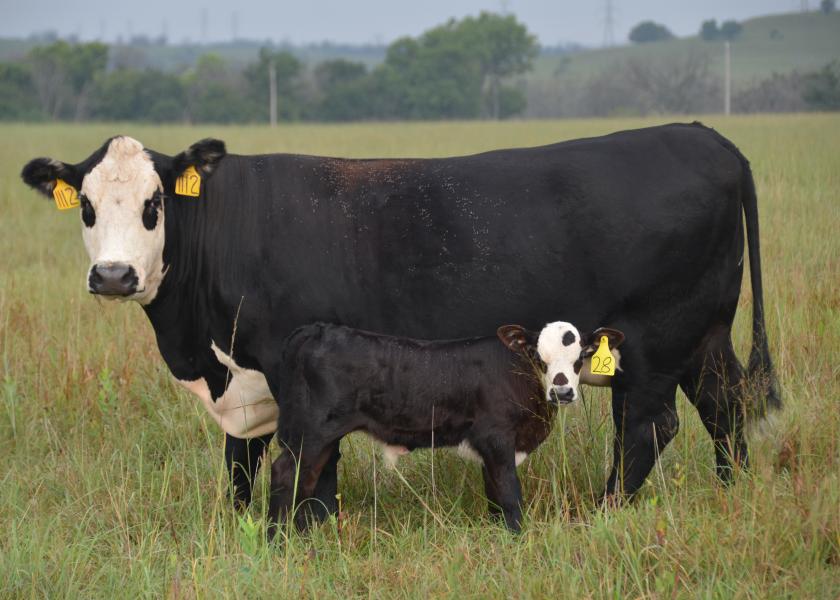Tips To Proactively Fight Pinkeye

Pinkeye (infectious bovine keratoconjunctivitis) is a fast-working infectious disease that can lead to lower calf-growth rate, potential blindness and permanent damage when left untreated. To avoid costly setbacks this summer, it’s crucial to start thinking about how to prevent the disease from entering your herd.
“When it comes to highly infectious diseases, it’s better to have a proactive approach than having to work quickly to treat an outbreak,” said Dave Festa, DVM, Boehringer Ingelheim. “Timely vaccination and good husbandry practices are key elements to provide your herd with pinkeye protection.”
To keep herds protected, Dr. Festa and Randy Shirbroun, DVM, Newport Laboratories, Inc. suggest implementing these management practices:
Fly Control
During the summer months, there is typically an increase in pinkeye outbreaks. Flies are more prevalent during this time and can transmit the bacteria that causes pinkeye from one animal to another.
“When you have multiple calves in any given area, the location can easily become a haven for flies,” stated Dr. Festa. “They’re fast spreading, and love to lay eggs in places like manure. Practicing good husbandry and cleaning up after animals as timely as possible make a tremendous difference in reducing fly count.”
Other methods to implement fly control include using fly tags, pour-ons, sprays, dust bags or back rubbers.
Dust Reduction
“Irritants such as airborne dirt and dust can cause irritation to the eye,” Dr. Festa added. “Once an irritant causes damage to the eye, pinkeye pathogens can attack the damaged cornea.”
Spraying water on the ground is one tactic to reduce the dirt and dust that animals can kick up when pen conditions are extremely dry.
In addition, producers can decrease the number of particles that can blow into the eyes of cattle and cause irritation by feeding animals in hay racks rather than unloading feed from trucks or wagons and placing it on the ground.
Closing Herds
“Whenever you don’t have a closed herd, there is a higher chance of animals being exposed to various disease-causing pathogens like pinkeye,” noted Dr. Shirbroun. “For some, it may not be practical to have a closed herd, so it’s important to keep in mind that there’s always a chance of pathogens being brought into a farm with an open herd.”
Early Vaccination
Moraxella bovis (M. bovis), a species of bacteria associated with pinkeye, continues to circulate throughout herds and is still the primary pathogen associated with pinkeye. In addition, emerging species of pinkeye bacteria, such as Moraxella bovoculi, Mycoplasma bovis and Mycoplasma bovoculi, make the disease increasingly complex and challenging for many producers and veterinarians to control. But there are vaccinations that can help.
“Year-round vaccination against M. bovis sets producers ahead of the game, and provides higher herd immunity,” said Dr. Festa. “This eliminates a guessing game of when pinkeye season will begin. By the time pinkeye starts to take hold, animals are already protected.”
Dr. Festa recommends using single-dose pinkeye vaccines to provide cattle protection and give producers greater ease by eliminating the need for a booster shot. When using pinkeye vaccines that require a two-dose regimen, often times the second dose is not administered to herds. This results in ineffective immunization of the calf. For this reason, it’s crucial to follow label directions and beneficial to use a vaccine that eliminates the need for a booster shot
“Although M. bovis is not the only pathogen that can cause pinkeye, vaccinating against this pathogen can significantly reduce the clinical signs and severity of the disease if an outbreak occurs,” continued Dr. Festa.
Additionally, if you feel you have been vaccinating appropriately, but still struggled last season, it is a good idea to consult your veterinarian. Your herd may be experiencing a combination of pinkeye-causing pathogens that requires further diagnostics and customized solutions
A simple swab of the lower conjunctiva (the thin membrane that covers part of the front surface of the eye and the inner surface of the eyelids) can provide a tremendous amount of information. The most accurate and reliable diagnostics is provided early in the disease process, prior to treatment.
“Fortunately, there are companies out there that can provide producers with full-service solutions, including commercial vaccines and custom-made vaccines,” Dr. Shirbroun pointed out. “Custom-made vaccines can help fill the gaps in disease prevention, complementing the protection producers are already getting from commercial vaccines.”







